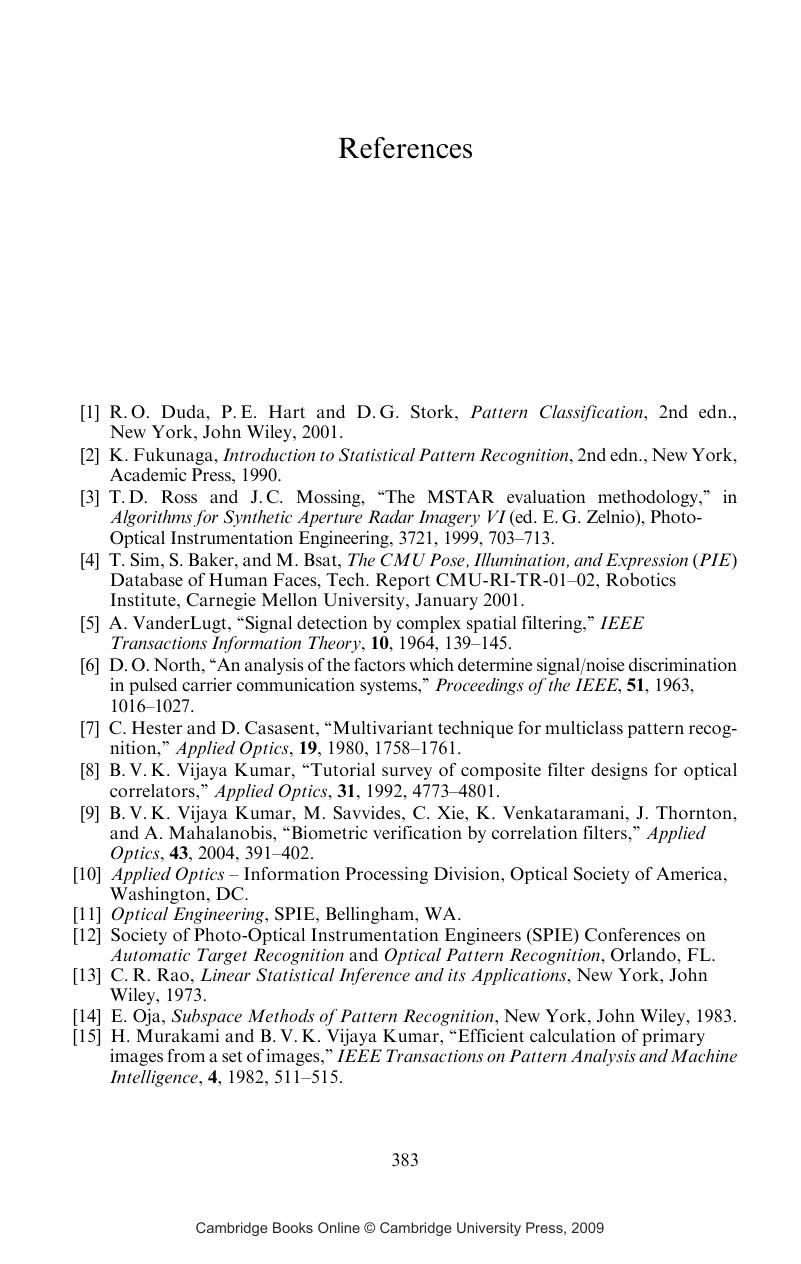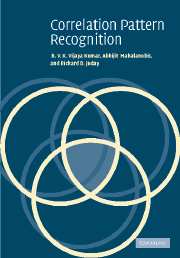Book contents
- Frontmatter
- Contents
- Preface
- 1 Introduction
- 2 Mathematical background
- 3 Linear systems and filtering theory
- 4 Detection and estimation
- 5 Correlation filter basics
- 6 Advanced correlation filters
- 7 Optical considerations
- 8 Limited-modulation filters
- 9 Application of correlation filters
- References
- Index
- References
References
Published online by Cambridge University Press: 06 August 2009
- Frontmatter
- Contents
- Preface
- 1 Introduction
- 2 Mathematical background
- 3 Linear systems and filtering theory
- 4 Detection and estimation
- 5 Correlation filter basics
- 6 Advanced correlation filters
- 7 Optical considerations
- 8 Limited-modulation filters
- 9 Application of correlation filters
- References
- Index
- References
Summary

- Type
- Chapter
- Information
- Correlation Pattern Recognition , pp. 383 - 387Publisher: Cambridge University PressPrint publication year: 2005



